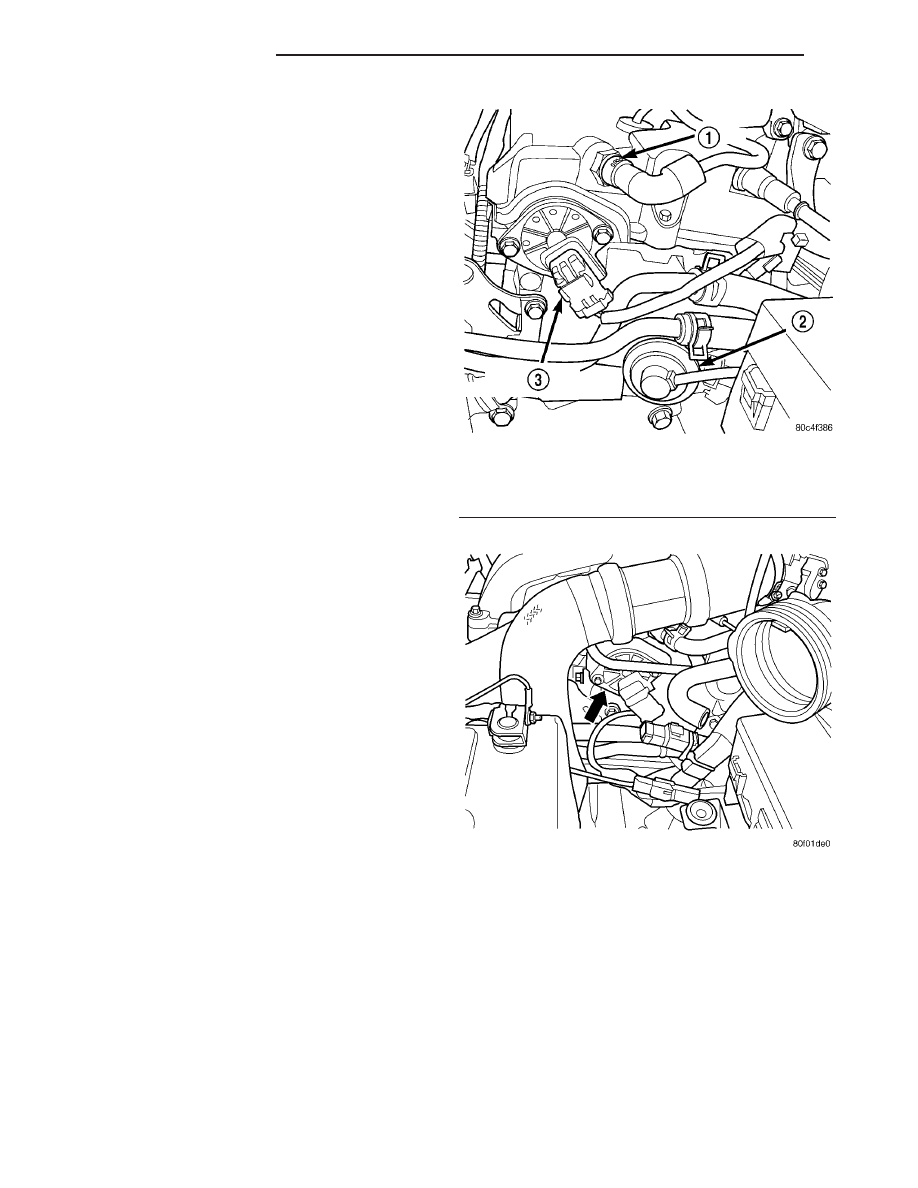Chrysler PT Cruiser. Manual - part 494

AUTO SHUT DOWN RELAY
DESCRIPTION
The relay is located in the Power Distribution Cen-
ter (PDC). For the location of the relay within the
PDC, refer to the PDC cover for location. Check elec-
trical terminals for corrosion and repair as necessary
OPERATION
The
engine
switched
battery
(NGC
vehicles)
informs the PCM when the ASD relay energizes. A 12
volt signal at this input indicates to the PCM that
the ASD has been activated. This input is also used
to power certain drivers on NGC vehicles.
When energized, the ASD relay on NGC vehicles
provides power to operate the injectors, ignition coil,
generator field, O2 sensor heaters (both upstream
and downstream), evaporative purge solenoid, EGR
solenoid
(if
equipped)
wastegate
solenoid
(if
equipped), and NVLD solenoid (if equipped).
The ASD relay also provides a sense circuit to the
PCM for diagnostic purposes. If the PCM does not
receive 12 volts from this input after grounding the
control side of the ASD relay, it sets a Diagnostic
Trouble Code (DTC). The PCM energizes the ASD
any time there is an engine speed that exceeds a pre-
determined value (typically about 50 rpm). The ASD
relay can also be energized after the engine has been
turned off to perform an O2 sensor heater test, if
vehicle is equipped with OBD II diagnostics.
As mentioned earlier, the PCM energizes the ASD
relay during an O2 sensor heater test. On NGC vehi-
cles it checks the O2 heater upon vehicle start. The
PCM still operates internally to perform several
checks, including monitoring the O2 sensor heaters.
CAMSHAFT POSITION
SENSOR
DESCRIPTION
On 2.0/2.4L engines the camshaft position sensor is
mounted to the rear of the cylinder head (Fig. 1),
(Fig. 2),.
OPERATION
The PCM sends approximately 5 volts to the Hall-
effect sensor. This voltage is required to operate the
Hall-effect chip and the electronics inside the sensor.
The input to the PCM occurs on a 5 volt output ref-
erence circuit. A ground for the sensor is provided
through the sensor return circuit. The PCM identifies
camshaft position by registering the change from 5 to
0 volts, as signaled from the Camshaft Position sen-
sor (Fig. 3).
On 2.0/2.4L engines a target magnet attaches to
the rear of the camshaft and indexes to the correct
position. The target magnet has fourteen different
poles arranged in an asymmetrical pattern. As the
target magnet rotates, the camshaft position sensor
senses the change in polarity (Fig. 4).
The PCM determines fuel injection synchronization
and cylinder identification from inputs provided by
the camshaft position sensor (Fig. 1) and crankshaft
position sensor. From the two inputs, the PCM deter-
mines crankshaft position.
Fig. 1 Camshaft Position Sensor -2.0/2.4L DOHC
1 - PCV VALVE
2 - EGR VALVE
3 - CAMSHAFT POSITION SENSOR
Fig. 2 CAMSHAFT POSITION SENSOR - 2.4L TURBO
8I - 4
IGNITION CONTROL
PT